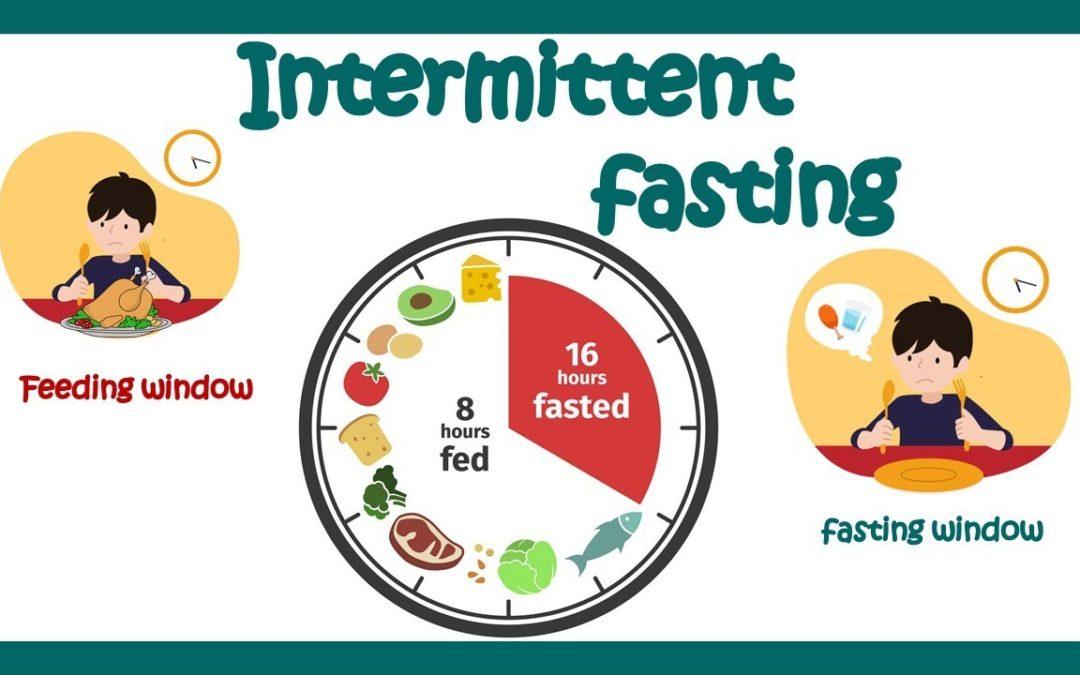In the modern hustle and bustle, where every second seems accounted for and every meal feels rushed, the ancient practice of intermittent fasting is quietly making a comeback. As the world becomes increasingly health-conscious, many are turning to this age-old dietary approach not just as a means to shed a few pounds, but as a holistic lifestyle change that promises to rejuvenate both body and mind. Imagine a rhythm of eating that aligns with your natural biological clock, allowing your body the time it needs to repair, rejuvenate, and ultimately, release those stubborn pounds. This article delves into the science and simplicity behind intermittent fasting, exploring how this method can guide you toward safe and sustainable weight loss, while offering a glimpse into a healthier, more balanced way of living.
Understanding the Science Behind Intermittent Fasting
At its core, intermittent fasting revolves around the concept of alternating periods of eating and fasting. This approach is not just about reducing calorie intake but also about understanding the body’s natural metabolic processes. During fasting periods, insulin levels drop significantly, which facilitates the burning of stored fat for energy. Additionally, intermittent fasting enhances the production of human growth hormone (HGH), which plays a crucial role in fat loss and muscle gain.
- Cellular Repair: Fasting initiates autophagy, a process where cells remove old, dysfunctional proteins and recycle them for energy.
- Improved Insulin Sensitivity: With regular fasting, the body becomes more efficient at processing glucose, reducing the risk of insulin resistance.
- Enhanced Brain Function: Increased production of brain-derived neurotrophic factor (BDNF) supports brain health and cognitive function.
These scientific principles underpin the effectiveness of intermittent fasting in promoting weight loss. By aligning eating patterns with these natural processes, individuals can experience a more sustainable and healthy weight loss journey.

Choosing the Right Fasting Method for Your Lifestyle
Embarking on the journey of intermittent fasting requires a thoughtful approach to ensure it aligns seamlessly with your daily routine. Different fasting methods offer varying levels of flexibility and intensity, allowing you to choose one that suits your personal lifestyle and goals. Here are a few popular methods to consider:
- 16/8 Method: Fast for 16 hours and eat during an 8-hour window. This method is perfect for those who prefer a daily routine, as it can easily be incorporated into a regular schedule by simply skipping breakfast.
- 5:2 Diet: Eat normally for five days a week and restrict calorie intake to 500-600 calories on the other two days. This approach offers more flexibility, making it ideal for those who want to maintain a regular diet most days.
- Eat-Stop-Eat: Involves a 24-hour fast once or twice a week. This method might suit those who prefer a more intense fasting experience and can handle a full day without meals.
- Alternate-Day Fasting: Fast every other day. This method can be challenging but is effective for those who thrive on structured routines.
Choosing the right fasting method is crucial for sustainable weight loss. Consider your daily commitments, energy levels, and social life when deciding which method to adopt. Remember, the best fasting plan is one that you can stick to consistently and comfortably.

Essential Tips for a Safe and Effective Fasting Routine
Embarking on an intermittent fasting journey can be a transformative experience, but it’s crucial to approach it with care and mindfulness. Here are some key guidelines to ensure your fasting routine is both safe and effective:
- Stay Hydrated: Water is your best friend during fasting periods. Keep your body well-hydrated to support metabolic functions and reduce hunger pangs.
- Listen to Your Body: Pay attention to how your body responds to fasting. If you feel dizzy or excessively fatigued, consider adjusting your fasting window or consulting a healthcare professional.
- Plan Balanced Meals: During eating periods, focus on nutrient-dense foods. Incorporate a variety of proteins, healthy fats, and complex carbohydrates to sustain energy levels.
- Avoid Overeating: It’s tempting to overindulge after a fast, but moderation is key. Eating in excess can negate the benefits of fasting and lead to digestive discomfort.
By integrating these practices into your routine, you can enhance the benefits of intermittent fasting while maintaining a balanced and healthy lifestyle. Remember, consistency and patience are your allies on this journey.

Balancing Nutrition and Fasting for Optimal Weight Loss
Intermittent fasting has gained popularity not just for its simplicity, but for its potential to enhance weight loss when paired with a well-balanced diet. The key is to ensure that during eating windows, you’re consuming nutrient-dense foods that fuel your body and support overall health. Focus on whole foods such as fruits, vegetables, lean proteins, and whole grains. These foods are not only filling but provide the essential nutrients your body needs to function optimally during fasting periods.
- Include healthy fats like avocados, nuts, and olive oil to keep you satiated.
- Prioritize protein to preserve muscle mass, especially if you are engaging in regular exercise.
- Stay hydrated by drinking plenty of water, herbal teas, or black coffee, which can also help curb hunger pangs during fasting periods.
- Monitor portion sizes to avoid overeating during your eating windows, which can counteract the benefits of fasting.
By balancing nutrition with fasting, you create a sustainable approach to weight loss that prioritizes health and wellness. The synergy of these two elements ensures that your body receives the nourishment it needs while effectively utilizing stored fat for energy, leading to safe and effective weight loss.
To Conclude
As the sun sets on our exploration of intermittent fasting, it’s clear that this age-old practice offers a pathway to weight loss that is as much about timing as it is about nourishment. By embracing the natural rhythms of eating and fasting, you may find not only a slimmer waistline but also a renewed sense of balance and vitality. Remember, as with any journey towards better health, it’s essential to listen to your body, consult with healthcare professionals, and tailor your approach to suit your unique needs. Whether you’re drawn to the simplicity of time-restricted eating or the allure of fasting windows, intermittent fasting holds the promise of transformation—one mindful meal at a time. So, as you ponder your next step, consider this practice as a tool in your wellness arsenal, guiding you towards a healthier, more harmonious self.

